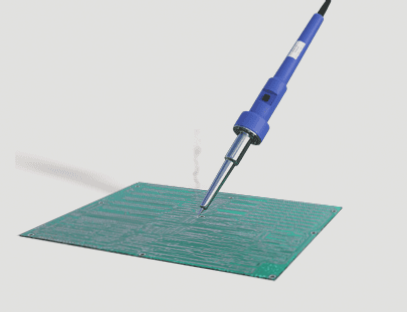10 characteristics of PCB: PCB circuit boards may appear similar on the surface, but their internal quality can differ significantly.
These surface distinctions are crucial for the durability and functionality of the PCB circuit board throughout its lifespan.
Whether during the manufacturing assembly process or in actual operation, PCB circuit boards must exhibit reliable performance, which is essential.
Beyond associated costs, defects in the assembly process can be transferred into the final product by the PCB circuit board, leading to potential failures during use and resulting in claims.
From this perspective, it’s fair to say that the cost of a high-quality PCB circuit board is minor in comparison.
In all market segments, especially those producing goods in critical application areas, the repercussions of such failures can be severe.
When evaluating PCB prices, these factors should be taken into account. Although the initial investment in reliable, guaranteed, and long-lasting products may be higher, they are ultimately a worthwhile expenditure over time.
Let’s examine the 14 most significant features of high-reliability PCB circuit boards:
1. 25-micron hole wall copper thickness benefits: enhanced reliability, including improved z-axis expansion resistance.
The risk of neglecting this: potential blow holes or outgassing, electrical connectivity issues during assembly (inner layer separation, hole wall breakage), or failures under load conditions in actual use. IPC Class 2 (the standard adopted by most manufacturers) requires 20% less copper plating.
2. No welding repairs or open circuit patching benefits: a flawless circuit ensures reliability and safety, requiring no maintenance and eliminating risk.
The risk of neglecting this: improper repairs can lead to circuit board failure. Even with a ‘proper’ repair, there remains a risk of failure under load conditions (e.g., vibration), potentially causing breakdowns during use.
3. Cleanliness requirements exceeding IPC specifications benefits: Enhanced PCB cleanliness contributes to improved reliability.
—
Let me know if you need any further adjustments!

—
**Risks of not doing so:** Residues and solder accumulation on the circuit board pose risks to the solder mask. Ionic residues can lead to corrosion and contamination on the soldering surface, potentially resulting in reliability issues such as poor solder joints and electrical failures, ultimately increasing the likelihood of actual failure.
4. **Use internationally recognized substrates—avoid “local” or unknown brands.**
**Benefits:** Enhances reliability and consistent performance.
**Risk of not doing this:** Subpar mechanical performance may hinder the circuit board from achieving the expected results under assembly conditions; for instance, high thermal expansion can lead to delamination, disconnections, and warping. Deteriorated electrical characteristics may result in inadequate impedance performance.
5. **Strictly monitor the service life of each surface treatment.**
**Benefits:** Ensures solderability and reliability, and minimizes moisture intrusion risks.
**Risk of not doing this:** Metallographic changes in older circuit board surface treatments can lead to soldering issues, while moisture intrusion may cause delamination and separation (open circuits) in inner layers and hole walls during assembly or actual use.
6. **Ensure copper clad laminate tolerances meet IPC4101 Class B/L standards.**
**Benefits:** Precise control of dielectric layer thickness can diminish deviations in expected electrical performance.
**Risk of not doing so:** Electrical performance might fall short of specified requirements, resulting in significant variations in output/performance across components in the same batch.
7. **Specify solder mask materials to align with IPC-SM-840 Class T requirements.**
**Benefits:** NCAB Group recognizes “excellent” inks, ensuring ink safety and compliance with UL standards for solder mask inks.
**Risk of not doing this:** Inferior inks can result in adhesion, flux resistance, and hardness issues, leading to solder mask separation from the circuit board and subsequent copper corrosion. Poor insulation may cause short circuits due to accidental electrical continuity or arcing.
8. **Define tolerances for shapes, holes, and other mechanical features.**
**Benefits:** Tight tolerance control enhances product dimensional quality—improving fit, shape, and function.
**Risk of not doing this:** Assembly issues may arise, such as alignment and fitting problems, which might only be identified upon completing assembly. Increased size deviations can also complicate base installations.
9. **NCAB specifies solder mask thickness, despite IPC’s absence of regulations.**
**Benefits:** Enhances electrical insulation properties, reduces risks of peeling or adhesion loss, and strengthens resistance to mechanical impact—regardless of where the impact occurs!
**Risk of not doing this:** A thin PCB solder mask may lead to adhesion, flux resistance, and hardness issues, causing separation from the circuit board and potential copper circuit corrosion. Insufficient insulation properties can lead to short circuits from accidental conduction or arcing.
10. **Define appearance and repair requirements, even though IPC has not established them.**
**Benefits:** Meticulous care during manufacturing promotes safety and quality.
—
Let me know if you need further adjustments!




